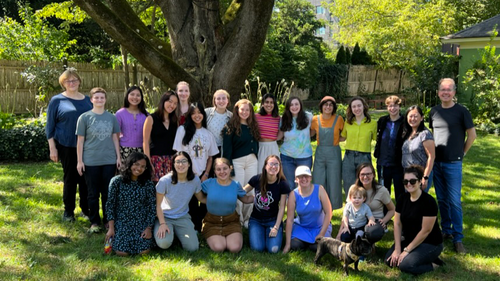
February 11th is the 9th International Day of Women and Girls in Science. This annual celebration, initiated by a resolution of the United Nations in 2015, recognizes the critical role that women and girls play in science and technology.
Yale Physics celebrates its community members, who are frequently recognized for their advocacy and efforts pertaining to diversity, equity, inclusion and belonging; in particular in efforts to increase awareness and opportunities for women and girls in STEM fields. Below are a few spotlights on some of these advocates.
Yale Physics advocates for Women and Girls in STEM
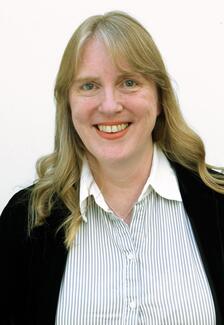
Caines is an advocate for diversity, equity, and inclusion in STEM. She has taught the Being Human in STEM course at Yale, which examines how gender, race, socioeconomic background, religion and sexuality shape the STEM experience. She was a past Chair of the Yale Physics Department Climate and Diversity Committee, and she is currently a member of the APS Committee on Minorities in Physics (COM).
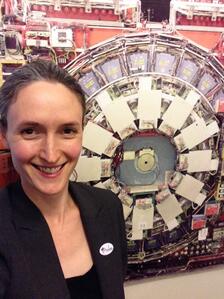
Demers is engaged with bringing science to the public realm and advocating for the equality of women in science through radio appearances, OpEds, podcasts, outreach experiences, and a variety of in-person events. Demers also served as the most recent faculty advisor for the American Physical Society Undergraduate Conference for Women in Physics (CUWiP) held at Yale in January of 2020.
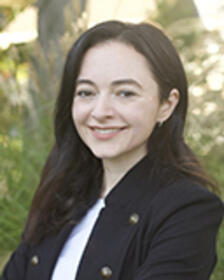
Caitlin Hansen, lecturer in physics. Caitlin’s primary focus is increasing the awareness of and involvement in the process of learning about science through an emphasis on improved pedagogy and classroom practices. Hansen has also helped coordinate and run Family Science Night, an outreach program for New Haven elementary schools aimed at increasing family involvement in the process of learning science.
Hansen has a passion for outreach and co-leads Girls Science Investigations along with Rona Ramos. She has also designed outreach for local high school students with Yale Pathways to Science.
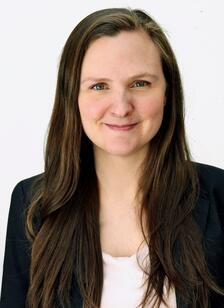
Laura Havener, assistant professor in physics, and a member of Yale’s Wright Lab. Havener’s research in high energy nuclear physics focuses on experimentally studying quantum chromodynamics (QCD) using high-energy particle colliders, such as ALICE at the Large Hadron Collider. Specifically, she specializes in exploring the complex structure of high-energy particles known to investigate the intricate nature of the deconfined state of QCD matter called the quark-gluon plasma (QGP).
Havener is a member of Yale Physics’ Climate and Diversity Committee, has designed and co-led outreach for local high school students with Yale Pathways to Science, and, as a new faculty hire this year, looks forward to building and joining additional efforts to increase opportunities for women and girls in STEM.
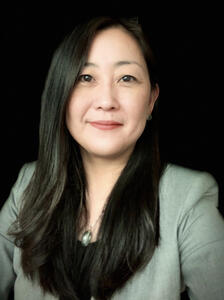 Reina Maruyama, professor of physics, and a member of Yale’s Wright Lab, designs and carries out cutting-edge experiments to study neutrinos and dark matter in nuclear particle astrophysics. The aim of these experiments are to solve some of the greatest mysteries of the evolution of the Universe–what is the Universe made of, and why does it have more matter than anti-matter?
Reina Maruyama, professor of physics, and a member of Yale’s Wright Lab, designs and carries out cutting-edge experiments to study neutrinos and dark matter in nuclear particle astrophysics. The aim of these experiments are to solve some of the greatest mysteries of the evolution of the Universe–what is the Universe made of, and why does it have more matter than anti-matter?
Maruyama is the recipient of several awards, including the Sloan Research Fellowship, NSF CAREER Award, Yale Public Voices Fellowship, and Woman Physicist of the Month from CSWP.
She was chosen by Ingenium to be featured on a poster for their Women in STEM initiative, intended to engage, advance and retain the interest of young women in the STEM fields.
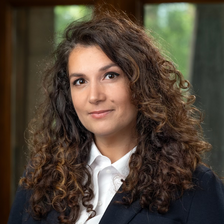 Chiara Mingarelli, assistant professor of physics, is a gravitational-wave astrophysicist looking to understand how supermassive black holes in the centers of massive galaxies merge.
Chiara Mingarelli, assistant professor of physics, is a gravitational-wave astrophysicist looking to understand how supermassive black holes in the centers of massive galaxies merge.
Mingarelli is the recipient of several awards, including the Early Career Prize from the American Astronomical Society’s high energy astrophysics division, the Yale Public Voices Fellowship, and Woman Physicist of the Month from the American Physical Society. She was a runner-up for Nature’s “Inspiring Women in Science Award”.
Mingarelli is known for outreach efforts; engaging with the public through the television series “How the Universe Works”, and PBS Nova, as well as through some popular science podcasts and popular science articles. In her previous position at the Flatiron Institute, Mingarelli was the Ada Lovelace Director of Diversity, and looks forward to continuing her work in diversity efforts in her new position here at Yale.
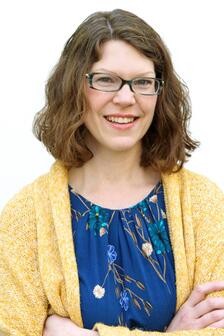
Newburgh received an NSF CAREER award in 2018.
Newburgh has given invited talks to the Seven Sisters colleges and the Women in Science colloqium at Princeton. She has also participated in Girls Science Day at Columbia University. At Yale, Newburgh has designed and carried out several outreach workshops for high school students with the Yale Pathways Summer Scholars program.
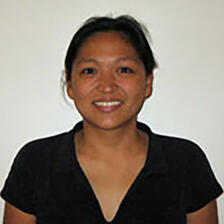 Rona Ramos, lecturer and graduate program coordinator in physics, focuses on the unique and human experiences of those who learn or do physics in both her roles as teacher and program coordinator.
Rona Ramos, lecturer and graduate program coordinator in physics, focuses on the unique and human experiences of those who learn or do physics in both her roles as teacher and program coordinator.
Ramos co-created and teaches the course Physics 530: The Theory and Practice of Scientific Teaching, a course which aims to improve undergraduate science education by training future faculty in the practice of inclusive teaching and evidence teaching methods. She is also currently an instructor for Being Human in STEM, a course which explores the lived experiences of underrepresented identities in STEM and the barriers they face in the scientific community.
As the co-director of Girls Science Investigations, Ramos has developed fun and engaging science activities for middle school girls that includes building robots that draw and paper circuit greeting cards. She is also the co-leader of the APS-IDEA team at Yale.
As the graduate program coordinator, Ramos focuses on supporting the growth and well-being of our graduate students, and making this a welcoming and exciting program for future students.
 Meg Urry, the Israel Munson Professor of Physics and Astronomy, and Director of the Yale Center for Astronomy and Astrophysics, researches active galaxies, which host accreting supermassive black holes in their centers. She has published over 400 refereed research articles on supermassive black holes and galaxies, including one of the most highly cited review papers in astronomy.
Meg Urry, the Israel Munson Professor of Physics and Astronomy, and Director of the Yale Center for Astronomy and Astrophysics, researches active galaxies, which host accreting supermassive black holes in their centers. She has published over 400 refereed research articles on supermassive black holes and galaxies, including one of the most highly cited review papers in astronomy.
Urry is known for her efforts to increase the number of women and minorities in science, for which she won the Edward A. Bouchet Leadership Award from Yale University and the Women in Space Science Award from the Adler Planetarium. She regularly writes and speaks about this issue in both professional and public venues. She has chaired the American Astronomical Society’s Committee on the Status of Women in Astronomy, and re-invented its newsletters AASWOMEN and STATUS . She organized the first conference on Women in Astronomy in 1992, which issued the Baltimore Charter, and a decade-later conference at Caltech in 2003, for which she is currently editing the Proceedings. She helped organize the American Physical Society’s 2007 Gender Equity Conference, and was elected a Fellow of the Association of Women in Science in 2006.
In 2002 she created the “flipped” classroom version of introductory Physics at Yale, and she is the founding Physics instructor for the Global Teaching Project, which provides advanced courses to promising high school students in under-served areas, beginning with a pilot program in rural Mississippi. She also writes about science for CNN.com.
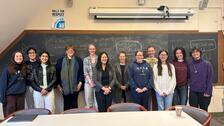
Yale Women in Physics (WiP) is an undergraduate student organization that undertakes a number of initiatives to support women and gender minorities in STEM, especially in the physical sciences. WiP serves the Yale community by hosting conferences, talks, lunches, mentoring programs, study halls, and social events.
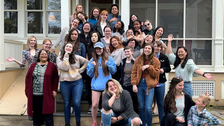
Yale Women in Physics+ (WiP+) is a graduate student organization focused on fostering a supportive environment for underrepresented genders in the Physics, Applied Physics, and Astronomy departments. WiP+ coordinates mentoring and social events for graduate students, post-docs, research scientists, and faculty. The group and many events are open to all allies in the department, from whom WiP+ welcomes support for its initiatives.

Girls’ Science Investigations is is a free program, hosted by Yale Physics, for girls in sixth, seventh, and eighth grade who are interested in learning more about science. The mission of Girls’ Science Investigations is to motivate, empower, and interest girls in developing the skills they need to pursue careers in science. University students and professors act as mentors and provide a context for exploring and understanding the various disciplines of science through hands-on activities in a laboratory environment. Through student scientific-engagement and parental awareness, Girls’ Science Investigations strives to close the gap in science found between males and females today.